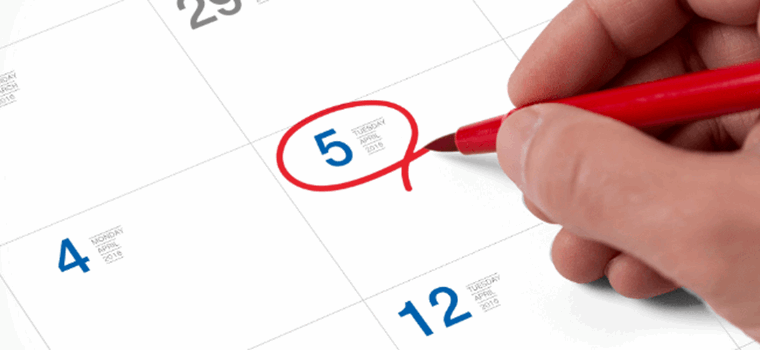Digitisation is high on the agenda in most organisations as leaders look for new ways to drive efficiency or gain competitive edge.
Written by Ben Bishop, COO.
HR is not immune to this pressure, but the press hype around new technologies, images of sleek, silver skinned automatons fulfilling all our administrative whims, is largely unhelpful to HR leaders in the early stages of their digital journey.
This is because the hype obscures the fundamentals of digitisation, the critical stuff you need at the beginning.
There's little point thinking about machine learning, for instance, if your underlying processes and data don’t support your digital objectives, or if your team is buried under mountains of paper.
So before we get excited about AI, RPA, IoT, chatbots or blockchain, let’s go back to the start and look at the eight fundamentals of HR digitisation.
Establish clear objectives
Be clear on your digitisation objectives and define the outcome you are looking to achieve in a measurable way. Our customers come to us with cost saving objectives, efficiency or business growth targets; they want to achieve faster insight or a clearer link between HR and business KPIs.
Often, it’s our job to help them understand exactly what success can look like; because having that clear picture at the outset lends purpose and direction to their digitisation strategy.
Ensure you have the right platform
Building a digitisation strategy will be reliant on having the right platform in place. This platform will of course need to deliver the commodity HCM elements, HR, Payroll, Learning, Talent Management, Recruitment and Payroll.
However, every platform is different, and not all will be flexible enough to map onto your unique business models and processes. Your chosen platform must support your specific objectives for delivery, deployment, information security, GDPR, workflow, integration, analytics, mobility, document management and employee engagement.
Future-proof technical development
The only constant in digital business is change. And as many businesses with unwieldy on-premise platforms are now realising, the ability to implement and assimilate the latest technological developments can be a key factor in maintaining that crucial competitive edge.
This is important, because the pace of change in HR and Payroll software is accelerating. Does your platform supplier have a strategy for AI, RPA, Chat, anytime, anywhere access? New technologies like these can be incredibly difficult to bolt on later, and if your platform doesn’t have a roadmap that includes these – beware, your foundations may already be shaky.
Capture and maintain your data
You have your objectives defined. You have the right platform in place to support them. Now you need to ensure that you can capture the right data, and of course keep it up to date.
With information security legislation such as GDPR, there is a far greater onus on organisations to make sure data is held securely, is only visible to people with the correct authority, is only used for the purpose for which it is intended and is removed when that purpose or overriding legitimate interest expires.
This is really hard if you have filing cabinets full of personnel information, rely on email to transmit secure information, or have spreadsheets full of offline data.
For more about how to leverage your people data, download our practical HR Data guide.
Digitise your documents
Be ruthless. Where possible, generate documents from your system, provide access to the recipient and store on their record. If this is not possible (have you got the right platform?), scan, scan, scan and shred, shred, shred. Add descriptive meta data to your scans to make them easy to catalogue and digitally search.
Automate your processes
You don’t need RPA or AI at this stage to automate your basic process and free valuable admin time (as well as capture and maintain your data and digitise your documentation in one go). As long as your platform provides a workflow tool you will be able to design appropriate digital workflows to replace your paper processes.
Beware, though, that you are not digitising process for the sake of digitisation. This is another opportunity to be ruthless. Interrogate every process and ask ‘why?’. Then, if the process justifies its continued existence, dust it down, inspect and improve it.
Engage employees
So, you have your platform, processes, data and documentation strategy in place. It's now time to engage all your employees in the digitisation journey. Not only the most valuable asset to your organisation as a whole, but also the subject matter experts on their own data.
Giving employees safe, secure and relevant access to the systems under digitised processes will reduce the admin burden on the HR teams exponentially. Keep as much as you can within the boundaries of the system, so you can retain visibility and control of the data, information flow and timings.
Build your analytics
Now you have your data under control, analytics are the crucial next step. Analytics give HR science-based facts to support their people strategy recommendations at board level. You no longer need a degree in advanced algebra to leverage them.
What's the difference between reporting and analytics?
Modern platforms should make it easy to design and implement analytics. Ours also comes with 100 pre-loaded templates, giving HR managers the ability to quickly mine people data for insights that can help drive efficiency, productivity, retention and engagement.
Get in touch with one of our specialists today to find out how we can help you build your digital HR strategy.




